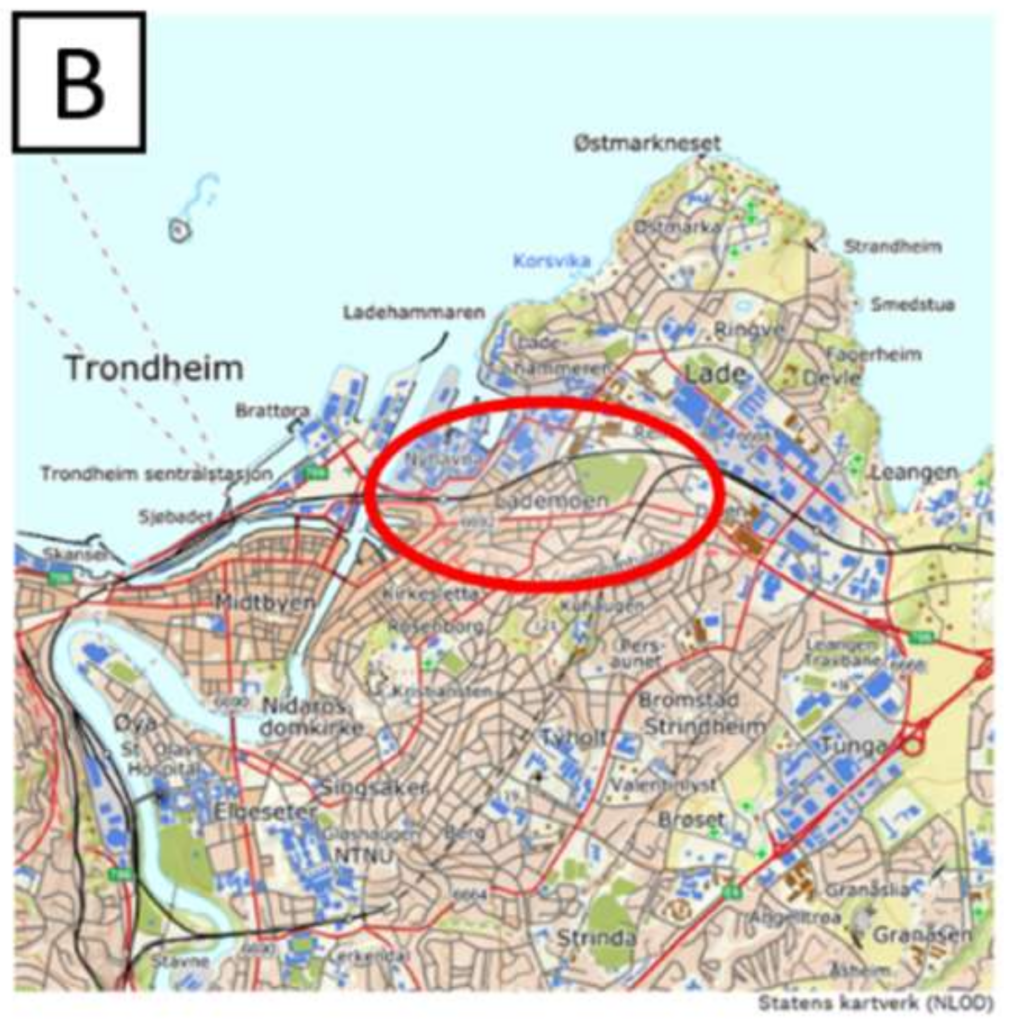CASE 5: Nature-based solution retrofit in an urban catchment
Partner in charge: NTNU (Norwegian University of Science and Technology)
Location: Trondheim, Norway
The case study includes: modeling of the potential for nature-based solutions for a combined sewer systems as an alternative to separated systems for different climate change scenarios. The effect will be measured by CSO volume reduction and pollutant load to the receiving waters; and the implementation of a pilot site for the NBS solution with online monitoring of WQ parameters.
Current Status Case Study + Needs for Improvement:
The Lademoen city district has been selected as a focus district in 2022/2023 by the municipality. This includes investment for upgrades to the infrastructure, community development programs, social meeting points and network building in the community. This project has a strong interdisciplinary focus across several departments.
Activities - Technical configurations and envisaged improvements
The district has combined sewers which are old. Over the next four years, the municipality plans to renew parts of the old system, yet only little space is available on the surface for nature-based solutions (NBS) which are commonly installed as separate units. This case will investigate a bioretention systems, directly installed online on the sewer intercepting the first runoff, and at exceedance of design capacity send the bypass flow onto the combined sewer systems. This solution will be explored with modeling and through a pilot study. The pilot has three main activities: The modeling will explore temporal and spatial resolutions for an optimal approach on computational effort and accuracy of analysis. The bioretention system will be assessed for runoff reduction and frequency and duration of CSOs spills, combined with water quality improvement performance. WQ measurements with online IoT based sensors for conductivity, turbidity combined with TSS, metals and prioritized emerging pollutants will be used to correlate flow and rainfall using machine learning techniques and input into a mass balance-based model focusing on the sources and pathways for the water quality parameters of interest. Application of the web-based ‘Water quality Interception’ tool for surface water system design performance assessment for end-users in the stakeholder panel and citizens involvement.
Ambition until the Project End and Beyond
Modelling will be carried out to investigate the potential for using online nature-based solutions (NBS) to reduce volume and duration for combined sewer overflows. An evaluation of the impact on water quality in the receiving waters will be made through assessment of the frequency and duration of spills of the CSOs. The performance of the online bioretention systems will be evaluated from an operational and maintenance view.


(A) Lademoen city district in Trondheim,(B) Location.
